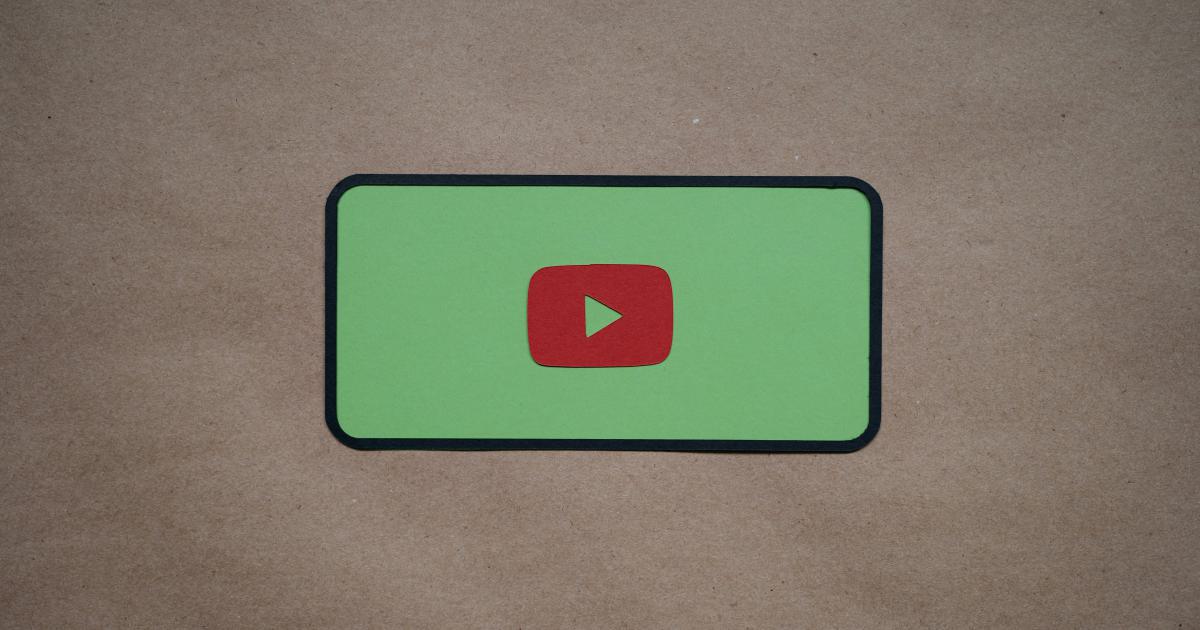Cultivating Quality Backlinks: A Content Repurposing Blueprint


Introduction: The Power of Quality Backlinks
In the ever-evolving world of digital marketing, the importance of quality backlinks cannot be overstated. Backlinks, which are essentially links from other websites to your own, serve as a crucial signal to search engines, indicating the authority and relevance of your content. A robust backlink profile can significantly boost your website's search engine rankings, driving more organic traffic and ultimately, increasing your chances of conversion and success.

However, building a strong backlink profile is no easy feat. Traditional methods, such as guest posting or outreach, can be time-consuming and often yield limited results. That's where content repurposing comes into play. By repurposing your existing content into new formats, you can create a steady stream of high-quality, shareable assets that can attract backlinks from a diverse array of sources.
In this comprehensive guide, we'll explore a step-by-step blueprint for cultivating quality backlinks through content repurposing. We'll delve into the key strategies, best practices, and real-world examples to help you leverage this powerful approach and take your digital presence to new heights.
Understanding the Backlink Landscape
Before we dive into the content repurposing blueprint, it's essential to have a firm grasp of the backlink landscape and the factors that contribute to their value.
The Importance of Backlink Quality
Not all backlinks are created equal. Search engines, such as Google, place a greater emphasis on the quality of your backlinks rather than the sheer quantity. A few high-quality backlinks from authoritative, relevant websites can be far more valuable than a large number of low-quality or irrelevant links.
The key factors that contribute to backlink quality include:
- Domain Authority: The overall strength and credibility of the referring website.
- Relevance: How closely the referring website's content and niche align with your own.
- Anchor Text: The text used to hyperlink to your website, which can signal the context and relevance of the link.
- Nofollow vs. Dofollow: Nofollow links, while still valuable for referral traffic, do not directly pass on ranking power, unlike dofollow links.
The Evolving Backlink Landscape
The backlink landscape is constantly evolving, with search engines continuously updating their algorithms to detect and penalize manipulative or low-quality link-building tactics. Strategies that may have worked in the past, such as excessive link exchanges or link farms, are now more likely to harm your website's rankings than to improve them.
To keep up with these changes, it's crucial to focus on building a diverse, high-quality backlink profile through sustainable, white-hat methods. This is where content repurposing can be a game-changer.
The Content Repurposing Blueprint for Backlink Generation
Now, let's dive into the heart of this guide: the content repurposing blueprint for cultivating quality backlinks.
Step 1: Audit Your Existing Content
The first step in your content repurposing journey is to conduct a thorough audit of your existing content assets. This includes blog posts, videos, podcasts, infographics, and any other shareable content you've created.

During this audit, consider the following:
- Popularity: Identify your most popular and high-performing content pieces, as these are likely to have the greatest potential for repurposing.
- Evergreen Value: Look for content that has lasting relevance and can be easily updated and repurposed over time.
- Content Gaps: Recognize areas where you may have valuable information to share but have not yet created content.
By understanding the strengths and weaknesses of your current content library, you can strategically plan your repurposing efforts to maximize their impact on your backlink profile.
Step 2: Repurpose Your Content into Diverse Formats
Once you've audited your existing content, it's time to start repurposing it into new, shareable formats. This not only breathes new life into your content but also expands its reach and appeal to a wider audience.

Some effective content repurposing formats include:
Blog Post to Video: Transform your written content into an engaging video format, which can be shared on platforms like YouTube, LinkedIn, and Instagram.
Podcast to Transcription: Convert your podcast episodes into text-based transcripts, which can be published on your website or shared as guest posts.
Infographic to SlideShare: Repurpose your data-rich infographics into visually appealing SlideShare presentations.
eBook to Medium Article: Adapt the content from your lead-generating eBooks into shareable articles on platforms like Medium.
Webinar to YouTube Video: Record and publish your webinar recordings on YouTube, making them easily accessible to a broader audience.
The key is to diversify your content formats, as this not only caters to different audience preferences but also increases the chances of your content being discovered and shared across various channels.
Step 3: Optimize Your Repurposed Content for Backlink Opportunities
With your repurposed content in hand, it's time to optimize it for maximum backlink potential. This involves strategic positioning, outreach, and promotion to ensure your content is seen by the right people and shared on the right platforms.

Here are some best practices for optimizing your repurposed content:
Incorporate Backlink-Friendly Elements: Ensure your content includes valuable, linkable assets such as statistics, industry insights, or unique research that other websites may want to reference.
Leverage Existing Relationships: Reach out to industry influencers, partners, or other relevant contacts and offer to feature their work or expertise in your repurposed content, in exchange for a backlink.
Promote on Backlink-Rich Platforms: Actively share your repurposed content on platforms that are known for their backlink potential, such as industry forums, social media groups, and relevant online communities.
Engage in Guest Posting: Identify high-authority, relevant websites in your niche and offer to contribute guest posts or articles that feature your repurposed content.
Utilize Outreach Strategies: Proactively reach out to potential linkers, such as industry bloggers or resource curators, and pitch your repurposed content as a valuable addition to their content.
By incorporating these optimization tactics, you can increase the visibility and shareability of your repurposed content, ultimately driving a steady stream of quality backlinks to your website.
Step 4: Monitor and Measure Your Backlink Growth
The final step in the content repurposing blueprint is to continuously monitor and measure the impact of your efforts on your backlink profile. This will help you identify what's working, what needs improvement, and guide your future content repurposing and backlink-building strategies.

Some key metrics to track include:
- Backlink Quantity: The total number of backlinks pointing to your website.
- Backlink Quality: The domain authority, relevance, and anchor text of your referring websites.
- Referring Domains: The number of unique websites linking to your content.
- Referring Page Authority: The strength and credibility of the specific web pages linking to your content.
By regularly monitoring these metrics, you can make data-driven decisions to refine your content repurposing efforts, identify new opportunities, and continually enhance your backlink profile.
Real-World Examples of Successful Content Repurposing for Backlinks
To further illustrate the power of content repurposing for backlink generation, let's explore a few real-world examples of brands and individuals who have leveraged this approach effectively.
Example 1: HubSpot's Repurposed Content Powerhouse
HubSpot, a renowned marketing and sales software company, is a prime example of successful content repurposing. The company regularly takes its popular blog posts and transforms them into various formats, such as videos, SlideShare presentations, and podcast episodes.

By repurposing their content, HubSpot has been able to significantly expand its reach and attract a diverse array of backlinks. For instance, their video versions of blog posts have been embedded on numerous industry websites, while their SlideShare presentations have been featured on relevant industry resource lists.
Example 2: Neil Patel's Multichannel Content Strategy
Neil Patel, a renowned digital marketing expert, is another shining example of content repurposing in action. Patel's content strategy involves creating high-quality, in-depth articles and then repurposing them across multiple channels, including his blog, YouTube, and social media platforms.

This multichannel approach has allowed Patel to reach a broader audience and cultivate a robust backlink profile. His repurposed content has been featured on industry-leading websites, podcasts, and guest posts, further solidifying his authority and driving valuable referral traffic to his own platforms.
Example 3: Moz's Infographic to SlideShare Transformation
Moz, a leading authority in the world of search engine optimization (SEO), has effectively repurposed its popular infographics into SlideShare presentations. These visually-engaging SlideShare decks have been widely shared and embedded on various industry blogs and resource pages, generating a steady stream of high-quality backlinks.

By transforming their data-rich infographics into easily shareable SlideShare presentations, Moz has been able to reach new audiences and positioning their brand as a go-to resource for valuable, authoritative content in the SEO space.
These examples demonstrate the versatility and impact of content repurposing as a sustainable backlink-building strategy. By leveraging your existing content assets and transforming them into new, shareable formats, you can unlock a world of backlink opportunities and strengthen your online presence.
Conclusion: Unlocking the Backlink Potential of Your Content
In the ever-evolving landscape of digital marketing, building a robust backlink profile is crucial for achieving long-term success. While traditional link-building tactics can be time-consuming and yield limited results, the power of content repurposing presents a game-changing solution.

By following the comprehensive blueprint outlined in this guide, you can unlock the backlink potential of your existing content assets and cultivate a steady stream of high-quality, sustainable links. From auditing your content to optimizing your repurposed material for backlink opportunities, each step of this process is designed to help you leverage the full potential of your content and elevate your online presence.
Remember, the key to successful backlink generation through content repurposing lies in your ability to create diverse, valuable, and shareable content that resonates with your target audience. By consistently applying this blueprint and tracking your progress, you'll be well on your way to building a backlink profile that drives lasting success for your business or personal brand.
So, what are you waiting for? Start repurposing your content and watch your backlink ecosystem thrive!